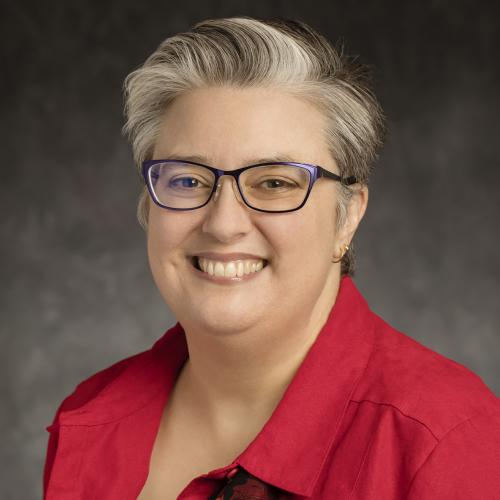By using products such as soap, shampoo, body lotion, toothpaste and makeup, the average consumer may be exposed to dozens of chemicals each day. It's not easy, though, to know exactly what is in many consumer products or what potential risks they pose, either individually or in combination.
A doctoral student and a professor in the University of Illinois School of Information Sciences are using an informatics approach to help prioritize chemical combinations for further testing by determining the prevalence of individual ingredients and their most likely combinations in consumer products.
Doctoral student Henry Gabb and professor Catherine Blake published the results of the first phase of their work in Environmental Health Perspectives, a journal of the National Institute of Environmental Health Sciences, part of the National Institutes of Health.
People are exposed to significantly higher levels of chemicals now than in the past from many sources, including consumer products.
"We are, in effect, test subjects in an uncontrolled biochemistry experiment. This has become an accepted, or perhaps ignored, trade-off of life in modern society," Gabb said.
In order to identify the chemicals present in consumer products, Gabb used a web-scraping program to gather product names, categories and ingredient lists from online retail sites such as Drugstore.com. The database he created includes nearly 39,000 products and more than 32,000 ingredient names.
Once he had information on the ingredients in consumer products, he had to solve the problem of chemical synonymy – the use of different names for the same substance.
"The same chemical can appear on multiple product labels under many different names. Unless you can resolve them to a unique chemical, you don't really know what you're counting," Gabb said. For example, according to the PubChem Compound database from the National Library of Medicine, wintergreen oil is another name for methyl salicylate, a suspected endocrine disruptor.
Gabb and Blake targeted 55 potential endocrine-disrupting and asthma-associated chemicals from a prior study that used gas chromatography-mass spectrometry analysis to measure the levels of these chemicals in consumer products. They found 30 percent of the products in their database contained at least one of the 55 target chemicals, and 13 percent contained more than one.
The informatics approach allows the researchers to look at many more products and detect many more chemicals than the gas chromatography-mass spectrometry approach, which is limited by the time it takes to prepare samples and run the experiments, among other things. However, the informatics approach is limited to what is actually listed on product labels, which are not always complete. Gas chromatography-mass spectrometry can identify chemicals that are not listed on a product label or even part of the product formulation, such as "chemicals that leach from the product packaging, degradation products or other impurities," Gabb said. The researchers said the two approaches should be considered complementary.
The initial informatics analysis considered chemical combinations within the same product, but combined exposure also occurs when several products are used in a given timeframe.
"This work provides another piece of the environmental-exposure puzzle and, unlike our genetic material, we can easily change our product usage," Blake said. "The combination of genetic susceptibility and individualized cumulative exposure – not just to other chemicals in consumer products, but from other sources such as air quality – empowers people to make informed decisions about changing the factors that directly influence their health outcomes."
Gabb and Blake hope their informatics approach can help prioritize testing based on the likelihood of exposure. They have started on the next phase of their research, in which they will expand their analysis from the 55 target chemicals in the first phase of the project to look at thousands of chemicals in the second phase.
They'll also study combinations of chemicals from multiple products based on actual consumer usage, rather than looking at products in isolation. They will use a dataset of consumer usage patterns, detailing what products are used and how often. The data can tell the researchers the chemicals and combination of chemicals consumers are being exposed to in a typical day or week.
Researchers can further prioritize which chemicals to study by also considering retention, or how the product is used. For example, shampoo and soap are rinsed off the body right away, while lotion is left on. Toothpaste and other products that come in contact with mucous membranes will likely result in more absorption of chemicals than a hair product.
Gabb and Blake's analysis also illustrates the difficulty consumers have in deciding which products to use or avoid. Manufacturers don't have to disclose the ingredients that produce fragrance and flavor in their products if those mixtures are considered proprietary. In such cases, the label would list "fragrance" or "flavor" rather than the specific ingredients. On the other hand, a label might list the chemicals that contribute to a fragrance, but not use the word "fragrance," leading a consumer to believe he or she is buying a fragrance-free product. This, in addition to chemical synonymy, makes a case for amending the Fair Packaging and Labeling Act to standardize ingredient nomenclature, at least for ingredients that are suspected of being harmful, Gabb said.
Gabb emphasized that the study examines the presence of potentially harmful chemicals (as determined by various authoritative sources like the EPA and NIH) in consumer products, but that it makes no value judgments regarding the safety of the chemicals themselves. His immediate goal is simply to help toxicologists better prioritize which chemicals and chemical combinations should be subjected to cumulative risk assessments.
